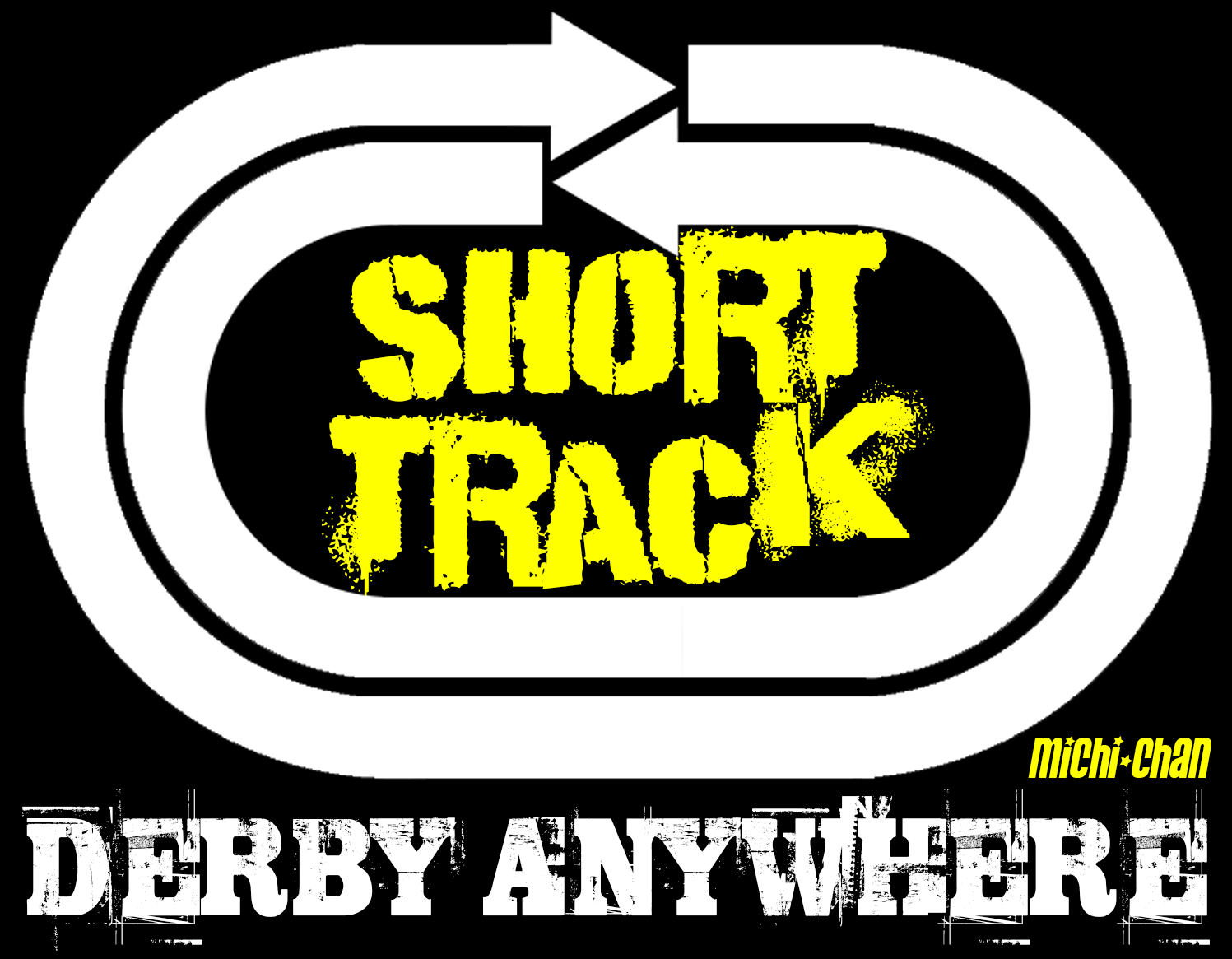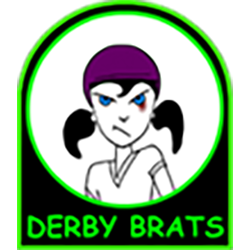The quest to find venue space is hard these days.
Sometimes, finding a venue for traditional flat track roller derby can be very hard. Over these past few years, it has been getting worse and I hear about many leagues have had problems finding venues who are able to work with them. Even out here in eastern Maryland where the Michi now resides, we lost our local WFTDA league, the Salisbury Rollergirls, because of this.
The international governing bodies of other sports have been looking for solutions to make the game more accessible around the world by adapting to accommodate smaller venues and smaller teams. A couple of great examples of these include:
Baseball 5 - This is a 5 player adaptation on baseball that is played on a hard surface in an area much smaller than a traditional baseball diamond.
3X3 Basketball - This is a 3-on-3 game that is on half of a more traditional basketball court.
What about roller derby? Could there be a way to accommodate a variation of the game we love, but in a much smaller space? The folks at the Rolla Skate Club may have struck gold on this derby dilemma..
Introducing Short Track Roller Derby!

Something old, something new, something borrowed, something black and blue
Recently, I have been introduced to a newer "flavor" of roller derby. It's called "short track" and it looks pretty interesting. Short track is a scaled down and simplified version of the normal "5 on 5" game which allows for small rosters and significantly less space needed to build a track (73' x 48'). Venues with a single basketball court, warehouses and even parking lots can now be used for derby! Short track made its RollerCon debut in 2018.
Basic ruleset concept
Game structure
- Bouts are 2 periods. In each period, there are a fixed number of jams (10). No period clock is required. The only timing needed is a jam clock/stopwatch and a timer for the line change (reset).
- Jams are 60 seconds each. Because there is no lead jammer rule, jams can't be called off early.
- Jams in the first period are skated clockwise, where jams in the second period are skated in the normal counter clockwise direction.
- After 2 periods (20 jams), if the score is tied, the game can either (1) end as a tie or (2) for elimination type games, an overtime jam can be ran. There will be a coin flip to determine direction. If more than one overtime jam is needed, then the direction will flip with every overtime jam.
- Each team fields three skaters, a jammer and two blockers. There is no pivot position and no star passes. There are no power jams.
- Jams are single whistle starts.
- Line Change (reset): At the end of the jam, there is a 30 second reset period until the start of the next jam. The ref will blow a whistle after 25 seconds into the reset period.
- Each team has one team time out per half. The time out is for 60 seconds. Officials can call time outs for as long as necessary. At the conclusion of any time out, the line change clock will restart at 30 seconds.
- If a time out is called during the middle of the jam, the jam will still count towards the 10 jams for the half. It will not be redone.
Scoring
- Scoring is extremely simple, if the jammer is able to properly pass both opposing teams blockers, it is 1 point per successful pass of both blockers, not 1 per blocker like in 5-on-5 derby.
- The jammer will receive score each time they break the pack, including the initial pass.
- The scoring system is designed in a way where teams can lose points (and even go into the negative) for penalties.
Skaters
- A roster may have up to 7 skaters.
- Each skater will wear an armband between 1 and 7. Numbers on uniforms are not required, but are allowed despite they have no meaning. (from a journalist, play-caller's perspective, I would like to see a unique number as it helps me better identify the player.)
- Jammers wear star helmet covers, no different than 5-on-5.
Jammer Order
- Teams must follow a strict jammer order, which can be compared to a batting order in baseball. Every skater on the team jams at least once per period. The first jam will have both skaters assigned position #1; for the second jam, both will have #2, etc. If there are less than 7 skaters on the roster, each one will be assigned a jamming slot in the lineup.
- Once each skater has jammed at least once in the half, they may bring up any skater as jammer for the remaining jams of the half. This can be a strategic method similar to a "golden batter" where you can bring up your best jammer(s) near the end where it may matter.
- The jammer order cannot be changed, except in the case of injury or expulsion. The same order must be used for both periods of the bout.
Penalties and Fouls
Short Track offers a unique method of "self enforcement" of certain infractions that they may make and as such, they would have the ability to remedy them without an adverse intervention by a referee. The skaters can do this through verbally calling "advantage" or "yield".
Advantage
If a foul creates no advantage to the fouling team/skater or no impactful disadvantage to the fouled team/skater, Advantage may be played and the game will continue its normal course.
If the skater self-determines that they have fouled in this manner, they can loudly say "advantage". The ref will respond with a hand signal. Refs can also call "advantage" on behalf of the skater.
Yield
If the foul does create an unfair advantage to either team's skater/team, they can call for a "Yield" to avoid the penalty. Refs can also call for a skater to yield.
A skater yields by disengaging from any contacting, turning 90 degrees to the direction of game play (either towards the infield or outfield) and then holding up their hands to their shoulders with elbows held close to the body (similar to surrendering on a 20-foot rule violation in 5-on-5) and must remain in that position until the skater(s) they had fouled passed their hips completely. If the opponent does not choose the pass the yielding skater, the fouling skater must maintain the yield position for at least 2 seconds. A skater who is yielding for pack definition will be considered "in play" but cannot be intentionally contacted by other players. Skaters that fail to yield is subject to penalties.
Fouls that can be remedied through "Advantage" and "Yield"
- Contact zones. Using an illegal initiation zone or making contact with an illegal strike zone.
- Contact out of play, including a downed skater or skater out of bounds.
- Direction. Initiating contact in the direction opposite of current game play.
- Track cutting: Gaining relative position on another skater while skating with at least one skate out of bounds.
- Intentionally skating out of bounds to avoid a block or create a "no pack" situation.
- Multiplayer blocking: Grasping or linking with another skater, creating an impenetrable link and another player challenges the link but the offending skaters do not automatically release.
- Out of play: Skating or stopping on the track in a location or manner that causes the skater to be beyond proximity to another pack skater (creating a split pack).
- False start: Not lining up in the appropriate box at the start of the jam (jammer box or blocker box).
Procedural Fouls (Penalties)
In the event that a penalty is called, there is no penalty box. Instead, the skater remains in the jam however, the team will lose two points. And yes, like the TV game show Jeopardy, it is possible for a team to have a score that is a negative number. If multiple players are collectively responsible for the foul, a single penalty will be earned for the collective action.
If a jammer is penalized for a procedural foul in the course of an attempted pass, they will not be awarded a pass for that attempt. If a jammer is penalized for failing to yield, they jammer may still attempt to re-attempt the pass to earn a pass and point.
The following are procedural fouls that will result in penalties and cannot be resolved through "advantage" or "yield":
- Delay of game, including deliberately impeding the normal, timely flow of the game, failure to field at least two skaters or failing to field a jammer in the correct jammer order.
- Equipment violations.
- Failure to reform: Failure to make an immediate, legal and brisk effort to return to an in-play position after an out-of-play call is made by an official.
- "Jerkface": Intentionally blocking a skater who is in the yielding skater who is in the yielding position. Unavoidable or incidental contact will not necessarily be penalized.
- Misconduct: Reckless or malicious game play, intentional jerkfaces, apparent attempt to injure, blatant disregard for the rules, repeated fouls or insubordination.
Refs can expel a skater for misconduct and must leave the field of play immediately.
"Low Contact" Variant
The Short Track Ruleset offers some variants to play the game in a "low contact" manner. The rules in this variant can be applied in situations where junior skaters are playing, a game that was more "fun" or to promote a "fans first" optic of the game that favors a game closer to classic modern roller derby similar to the Michi-chan Classic Modern Ruleset for 5-on-5 roller derby (in the case of Rules #2 and #3).
- Rule 1: Skaters will not initiate contact (blocks) with a forceful initial impact. Initial contact may not cause the receiving skater to abruptly change relative position; after initial contact is made; after initial contact is made, forceful leading or driving is allowed.
- Rule 2: Skaters may not use arms or hands to brace each other against the force of an opponent attempting drive or push. A skater may use their hands to move a teammate in place or deliver an assist.
- Rule 3: Blockers may not use face-to-face blocking. Blockers may only block a jammer or other blocker while facing 90 degrees or less relative to the direction of play. In other words, a blocker may face as much perpendicular to the track boundaries but no further in the anti-play direction while blocking another skater. A blocker may turn in any direction while not blocking, but must not receive a jammer or blocker's forward contact while facing against the direction of play.
More information
The Rules
Short Track was created by the Rolla Skate Club, who maintains the official ruleset. Michi-chan Sports hosts a PDF version of version 2.1 of the Rules at:
Short Track Rules from Rolla Skate Club
Out here on the east coast, the Michi has started working with helping an upstart league that will be playing exclusively Short Track as they have found an accommodating rink, but the rink is too small for a standard WFTDA or USARS track.
If you have any questions about this flavor of derby, feel free to contact the Michi!
Skate hard, skate safe, derby love!














